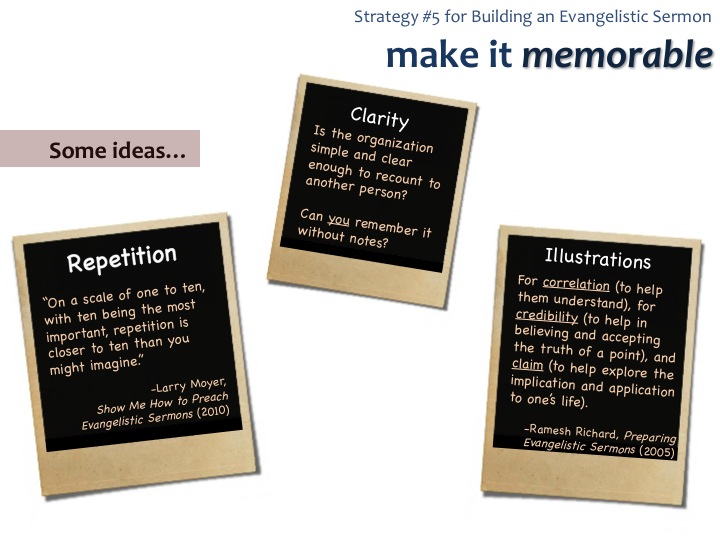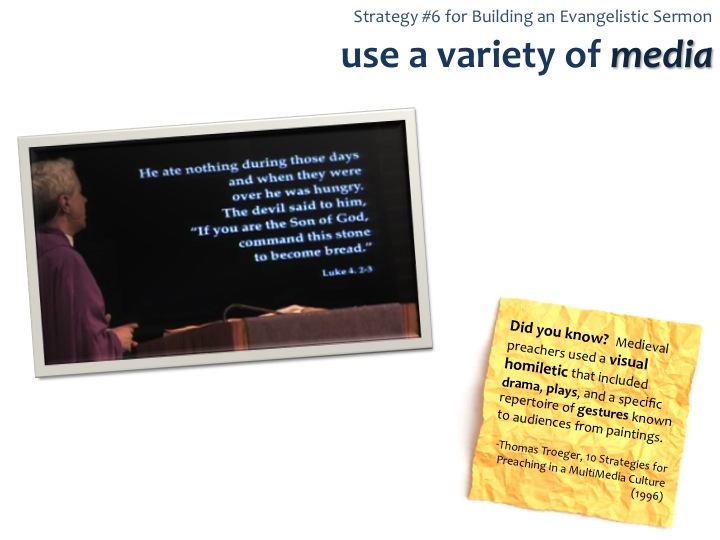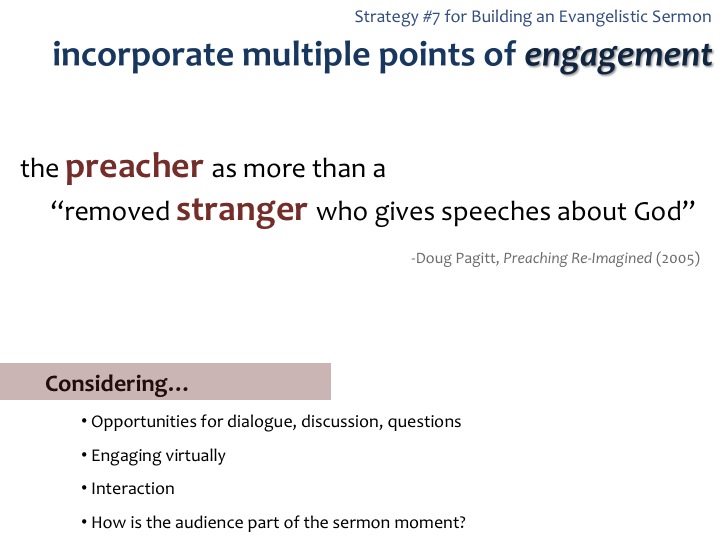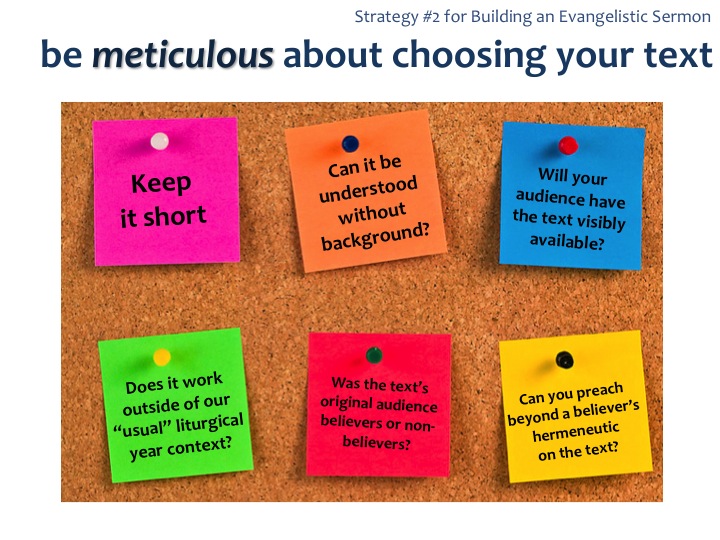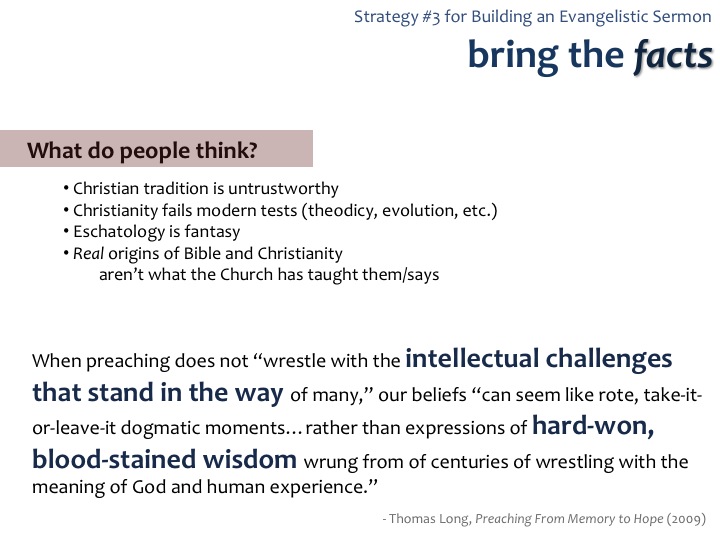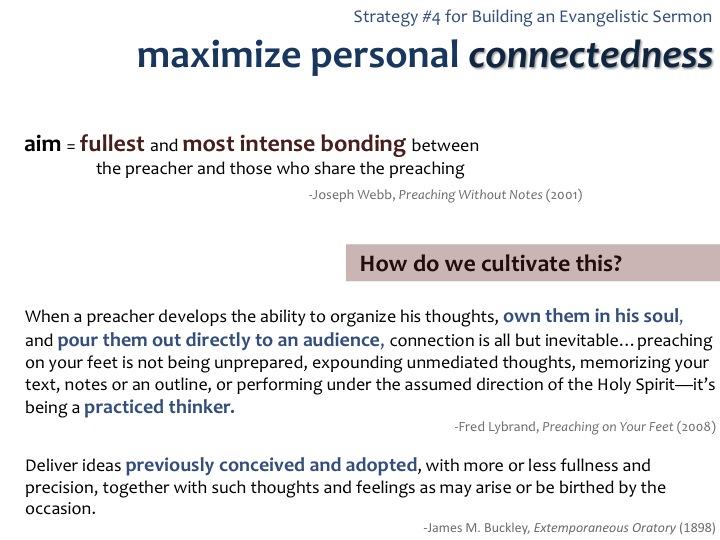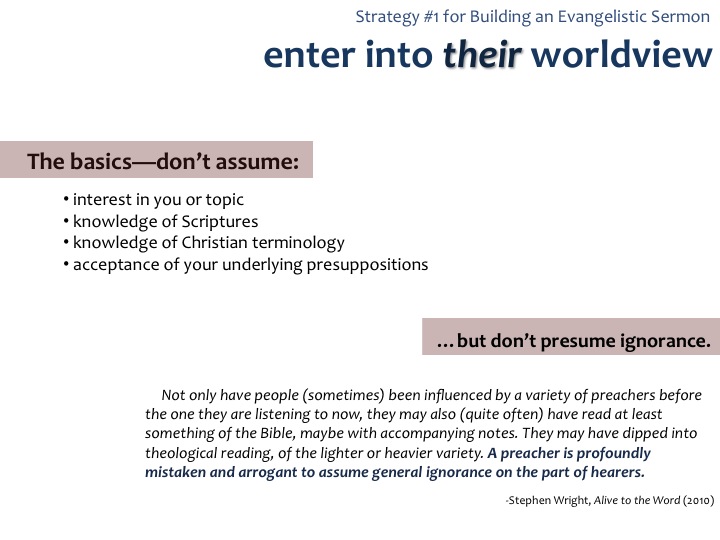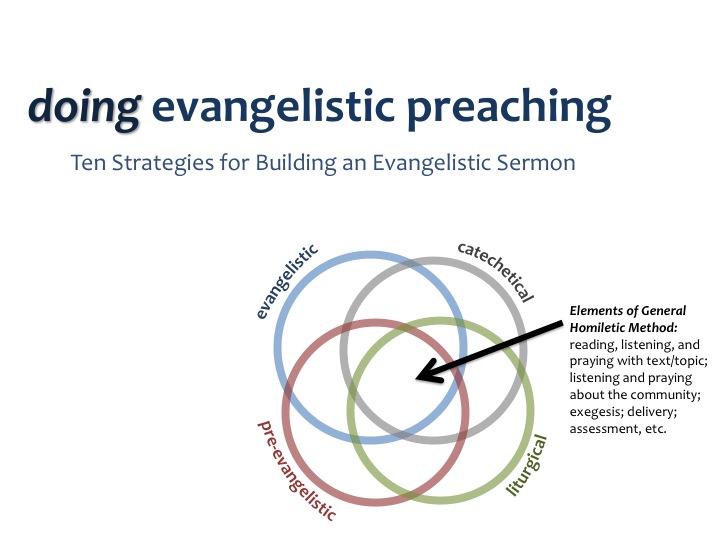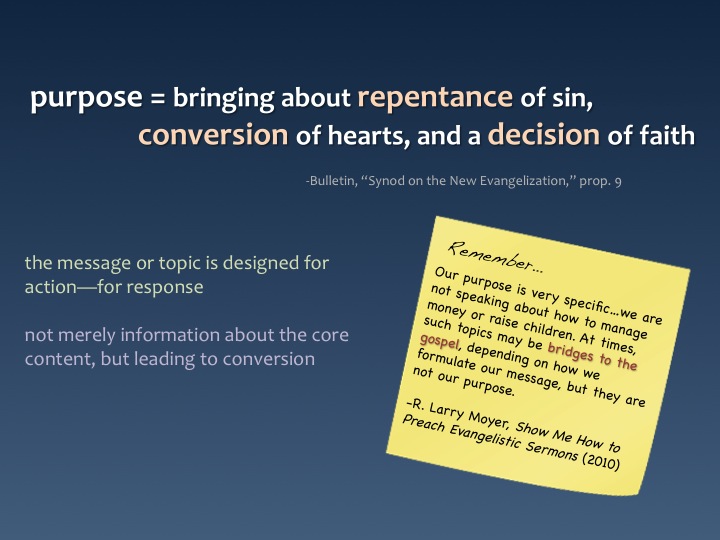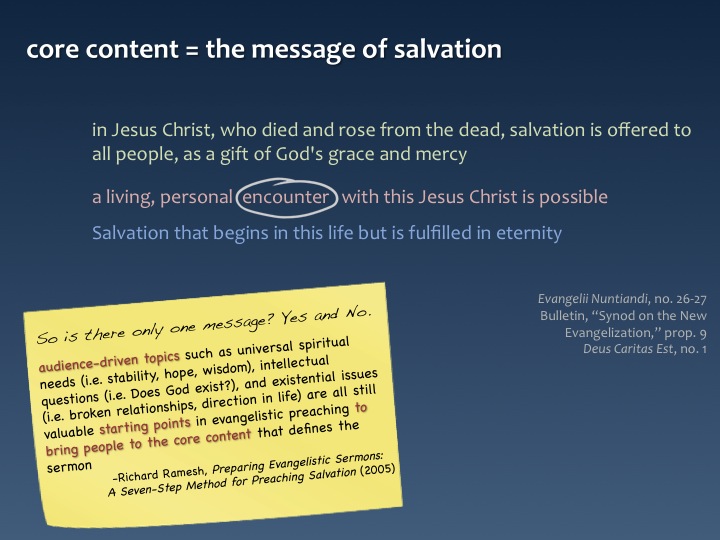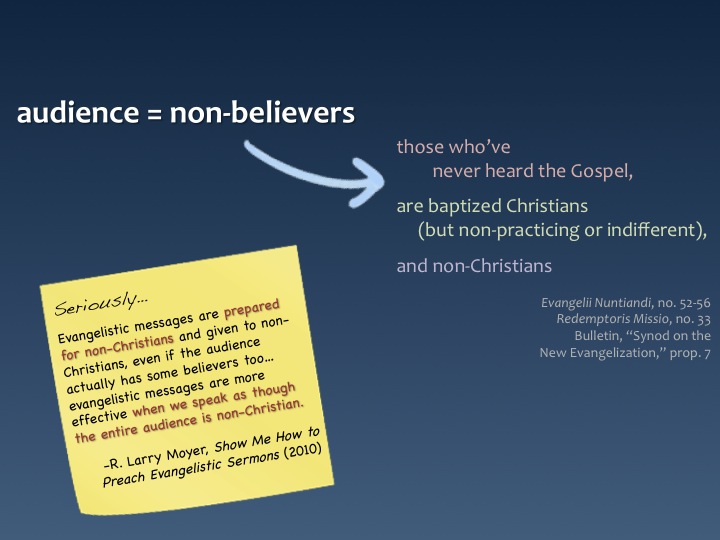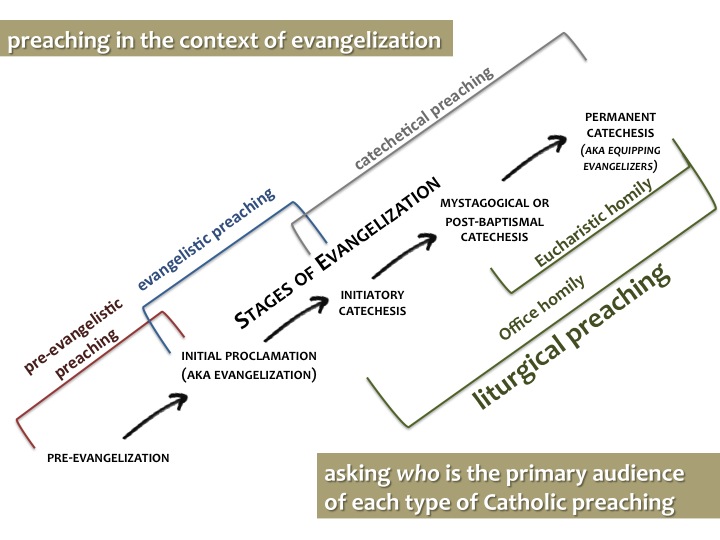This is the twelfth post in a series on evangelistic preaching in Catholic contexts.
We’ve reached the point of discussing how to preach evangelistically in our Catholic context. Here are strategies 5, 6, and 7.
Effective evangelistic sermons are memorable so that hearers can continue to ponder the message after it has ended, reviewing and considering (hopefully prayerfully) the call for action or decision. To help make a sermon more memorable, preachers consider clarity (if the one delivering the message can remember it without notes, then a hearer might also be able to remember the logic of the sermon and even potentially recount it to another person), repetition, not simply restatement, of key phrases, and use of illustrations.
“Present-day audiences are oriented toward story in sight and sound in addition to verbal instruction,” and are indeed “accustomed to receiv[ing] and shar[ing] much of our communication through images.”[1] The use of multiple media to convey a message could be as simple as offering Scripture verses projected on a screen for those who are unfamiliar with a Bible or Missal [photo example: Fr. Michael White of Church of the Nativity, Timonium, MD], or as intricate as the use of interwoven theater or drama to communicate a message. Medieval preachers, for example, used a visual homiletic that included drama, plays, and a specific repertoire of gestures known to audiences from paintings.[2] When incorporated with care and discernment, the use of a variety of media can make an evangelistic sermon more evocative, vivid, moving, and memorable.[3]
In an evangelistic setting, where establishing the credibility of the preacher and a way for hearers to follow-up and continue to ask questions are of particular importance, creating multiple points of engagement can help create lasting impact for the sermon. This means considering opportunities for dialogue, discussion, interaction and questions after or during preaching, using the internet and text-messaging to offer opportunities for virtual engagement, and exploring how to make the audience part of the sermon moment.
——-
[1] Richard, Preparing Evangelistic Sermons, 155; Wright, Alive to the Word, 162.
[2] Thomas H. Troeger, Ten Strategies for Preaching in a Multimedia Culture, (Nashville, TN: Abingdon Press, 1996), 12.
[3] Wright, Alive to the Word, 164.

